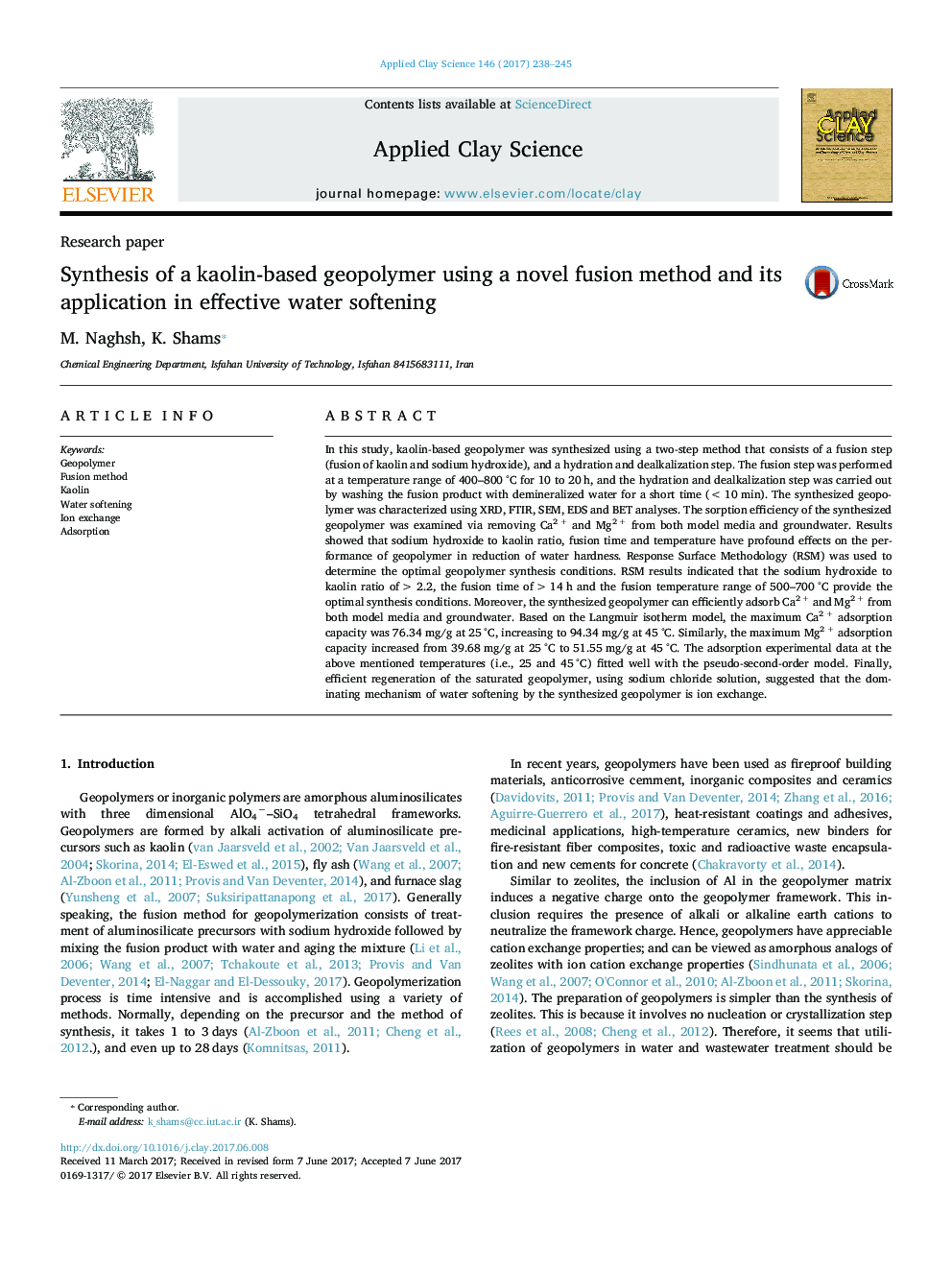| Article ID | Journal | Published Year | Pages | File Type |
|---|---|---|---|---|
| 5468849 | Applied Clay Science | 2017 | 8 Pages |
Abstract
In this study, kaolin-based geopolymer was synthesized using a two-step method that consists of a fusion step (fusion of kaolin and sodium hydroxide), and a hydration and dealkalization step. The fusion step was performed at a temperature range of 400-800 °C for 10 to 20 h, and the hydration and dealkalization step was carried out by washing the fusion product with demineralized water for a short time (< 10 min). The synthesized geopolymer was characterized using XRD, FTIR, SEM, EDS and BET analyses. The sorption efficiency of the synthesized geopolymer was examined via removing Ca2 + and Mg2 + from both model media and groundwater. Results showed that sodium hydroxide to kaolin ratio, fusion time and temperature have profound effects on the performance of geopolymer in reduction of water hardness. Response Surface Methodology (RSM) was used to determine the optimal geopolymer synthesis conditions. RSM results indicated that the sodium hydroxide to kaolin ratio of > 2.2, the fusion time of > 14 h and the fusion temperature range of 500-700 °C provide the optimal synthesis conditions. Moreover, the synthesized geopolymer can efficiently adsorb Ca2 + and Mg2 + from both model media and groundwater. Based on the Langmuir isotherm model, the maximum Ca2 + adsorption capacity was 76.34 mg/g at 25 °C, increasing to 94.34 mg/g at 45 °C. Similarly, the maximum Mg2 + adsorption capacity increased from 39.68 mg/g at 25 °C to 51.55 mg/g at 45 °C. The adsorption experimental data at the above mentioned temperatures (i.e., 25 and 45 °C) fitted well with the pseudo-second-order model. Finally, efficient regeneration of the saturated geopolymer, using sodium chloride solution, suggested that the dominating mechanism of water softening by the synthesized geopolymer is ion exchange.
Related Topics
Physical Sciences and Engineering
Earth and Planetary Sciences
Geochemistry and Petrology
Authors
M. Naghsh, K. Shams,
